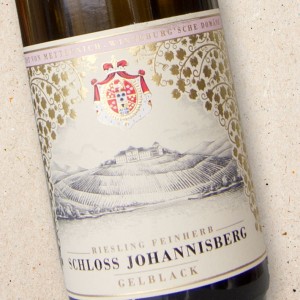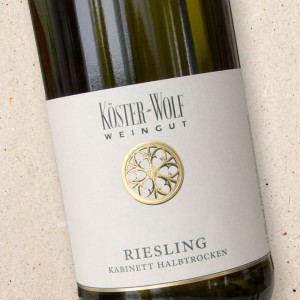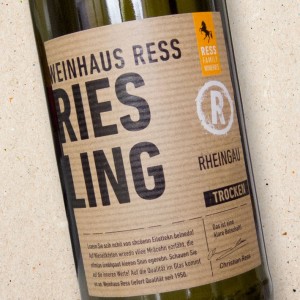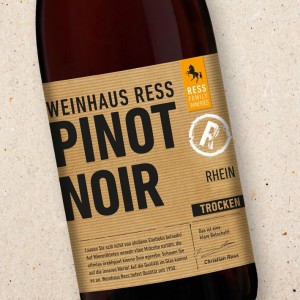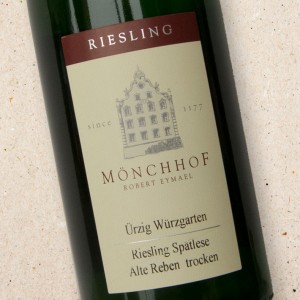Schloss Johannisberg Riesling Grunlack Spatlese Green Seal 2022
Schloss Johannisberg Riesling Grünlack Spätlese 'Green Seal' is a rich and fragrant Spätlese, with an exotic bouquet of orange peel, pineapple and passion fruit, lime complemented by ripe, red apple and delicious mineral undertones. Initial sweetness is perfectly balanced by a juicy freshness on the palate with a delicately creamy finish.
The legendary Schloss Johannisberg is steeped in history. The vineyards were planted on the orders of the Roman Emperor Charlemagne. Planted solely with Riesling grapes in 1720, Schloss Johannisberg was the world's first Riesling Estate and plays a significant part in wine history. It was here in 1775 that the Spätlese quality was discovered using late picked grapes suffering from "noble rot". Following this discovery, in 1787 the estate gave Auslese, Beerenauslese and Trockenbeerenauslese to the wine world. Schloss Johannisberg is a single vineyard designation in its own right and one of a handful of German vineyards that does not have to display a village name on the label.
The south-facing vineyard is steep, with a gradient of 45° and climbs from 114 to 181 metres above sea level. The Riesling vines are grown in quartz stone from the Taunus hillsides interspersed with red clay and topped with loam and rich loss, which retains water and the heat of the day. This unique vineyard sees the 50° parallel run directly through the vineyard and the forest on the top of the Taunus hillsides protects the vines from cold winds. The vines produce limited yields and the grapes are carefully harvested by hand. Spätlese is translated as "late harvest": the grapes are harvested at least seven days after the normal harvest, so they are riper, have higher sugar content and produce wines of greater intensity.
The grapes were carefully selected and gently pressed in whole clusters. A slow, long and cool fermentation took place with wild yeasts in 100% stainless steel tanks, preserving the varietal characteristics of the Riesling grapes and the terroir from which they hail. The wine was aged for five months on its fine lees adding texture and complexity.
| RRP | £51.75 |
| Vintage | 2022 |
| Alcoholic strength | 8% |
| Serve with | Rich seafood dishes, especially lobster |
| Grapes | Riesling 100% |
| Dry/Sweet value | 5 |
| Vegetarian | Yes |
| Vegan | Yes |
| Milk | No |
| Eggs | No |
| Organic | No |
| Biodynamic | No |
James Suckling's Top Wines of 2020, No.2 wine of the year, 100 points:
"2019 is a benchmark for modern German wines and that this is one of the best ever made…"
"Many consider Schloss Johannisberg the birthplace for German riesling as well as sweet wines. It’s been making them since the mid-1770s."
"The 100-point medium-sweet, dense and layered Schloss Johannisberg Riesling Rheingau Grünlack Spätlese 2019 is a monument to the genre and is a reminder of the historical greatness of sweet wines of Germany… Don’t miss buying some."
Stuart Pigott wrote:
"The 2019 vintage is the best vintage I have ever tasted for German riesling in my four-decade career. Like James, my career as a wine critic began in the early 1980s. The first German vintage I tasted as young wines was 1983 and I can’t remember a vintage like that – until now. The 2019 wines, from dry to classic style with natural grape sweetness are simply astonishing quality, which means 2019 is one of the greatest vintages of modern times and will be remembered for decades, possibility generations."
The legendary Schloss Johannisberg is steeped in history. The vineyards were planted on the orders of the Roman Emperor Charlemagne. Planted solely with Riesling grapes in 1720, Schloss Johannisberg was the world's first Riesling Estate and plays a significant part in wine history. It was here in 1775 that the Spätlese quality was discovered using late picked grapes suffering from "noble rot". Following this discovery, in 1787 the estate gave Auslese, Beerenauslese and Trockenbeerenauslese to the wine world. Schloss Johannisberg is a single vineyard designation in its own right and one of a handful of German vineyards that does not have to display a village name on the label.





